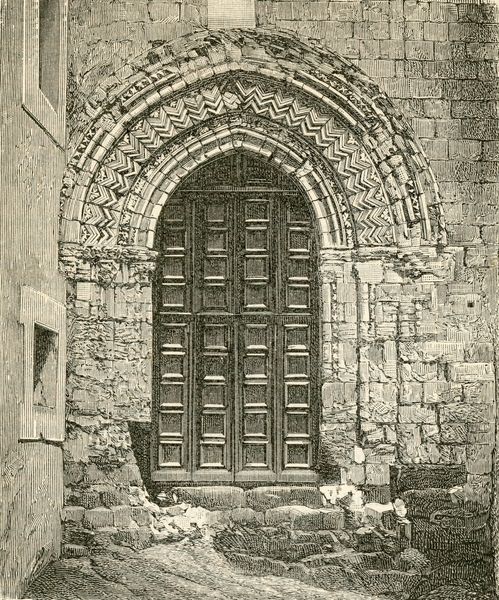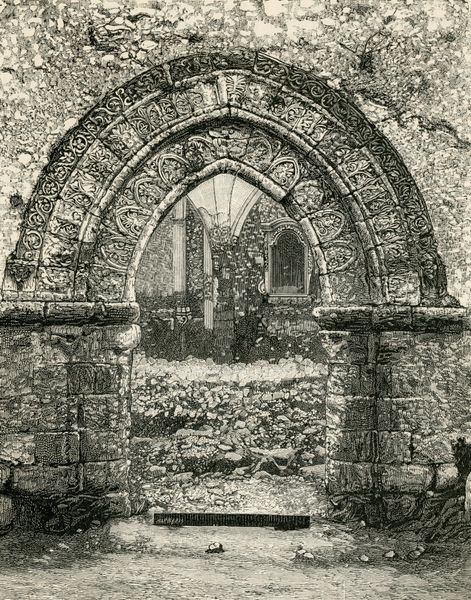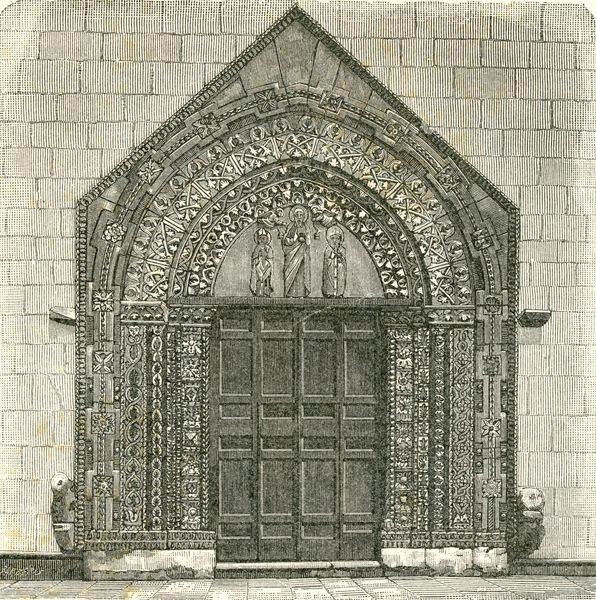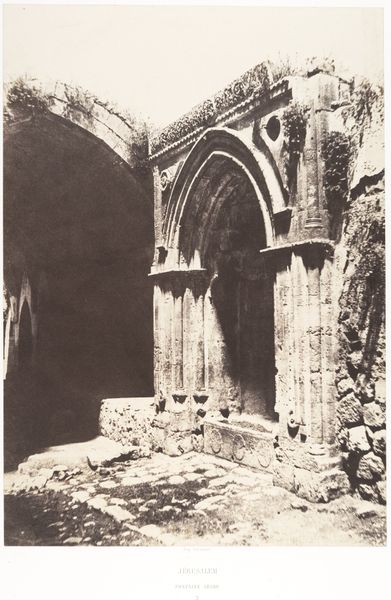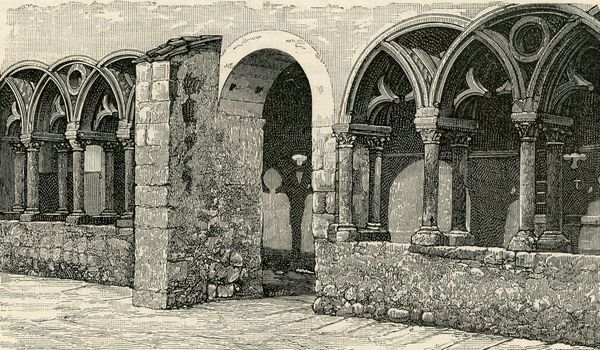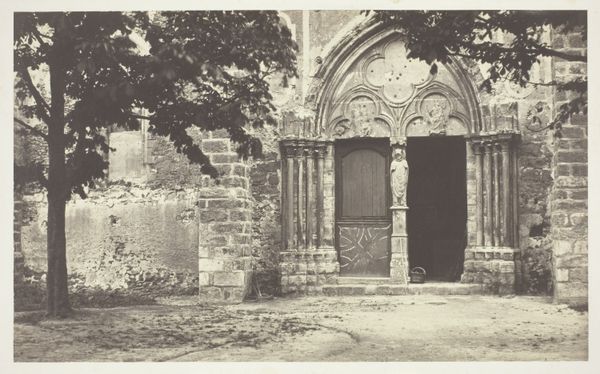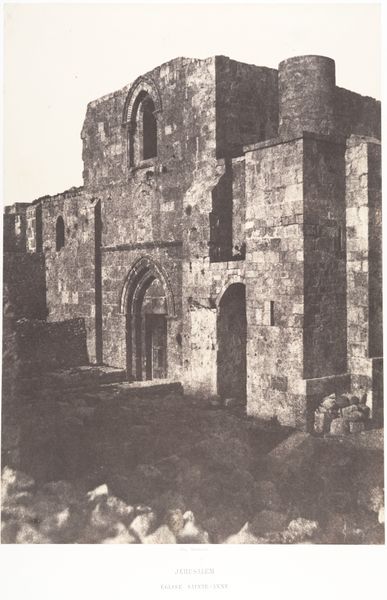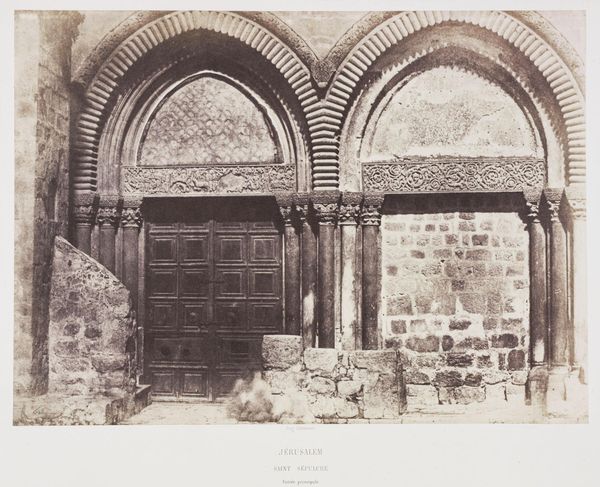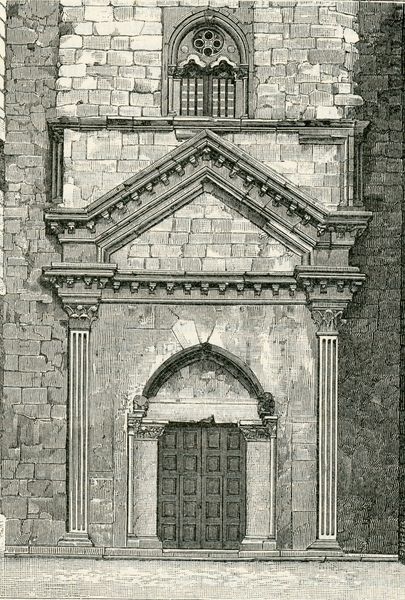
print, engraving, architecture
# print
#
landscape
#
historic architecture
#
form
#
romanesque
#
line
#
cityscape
#
engraving
#
architecture
#
realism
Copyright: Public domain
Curator: Before us we have Giuseppe Barberis' 1890 print, "Porta Della Chiesa Di San Nicolò," an engraving rendered in meticulous detail. What are your initial thoughts? Editor: Immediately, I'm struck by the play of light and shadow. The texture created by the engraving brings the stone to life, offering a certain gravitas to the monumental architecture. Curator: Absolutely. And Barberis, known for his landscapes, places this architectural study firmly within a lineage of realism, even while romanticizing a Romanesque form. San Nicolò isn’t merely depicted, it's framed as an enduring cultural artifact. Editor: Yes, but notice how the emphasis is almost entirely on form. The semi-circular arches, the vertical columns, and the repeating patterns on the door, create a compelling structure in the picture, demanding the viewer's attention, and hinting at a harmonious and beautiful building. Curator: And that form echoes throughout its time. The image participates in broader movements focused on architectural preservation, and the popularization of cultural heritage through accessible reproductions. How might seeing a print like this influence the popular opinion of architecture, wouldn't you think? Editor: I think you're right! The distribution of prints played an undeniable role in shaping taste and knowledge, framing historical narratives in easily reproducible media. In any event, looking closely at the doorway’s texture shows the wear of centuries and invites speculation about human experience within sacred places. Curator: Certainly. I would only add, that as the Romanesque gave way to the Gothic style, prints like this fostered interest in art and culture throughout Europe, providing a window to historical spaces beyond geographical constraints. Editor: All in all, it's fascinating how Barberis renders this slice of history through this medium, inviting reflections on form, history, culture, and memory with such meticulous artistic technique. Curator: Yes, and on how a print, seemingly a simple image, can be layered with meaning and resonate through generations.
Comments
No comments
Be the first to comment and join the conversation on the ultimate creative platform.
